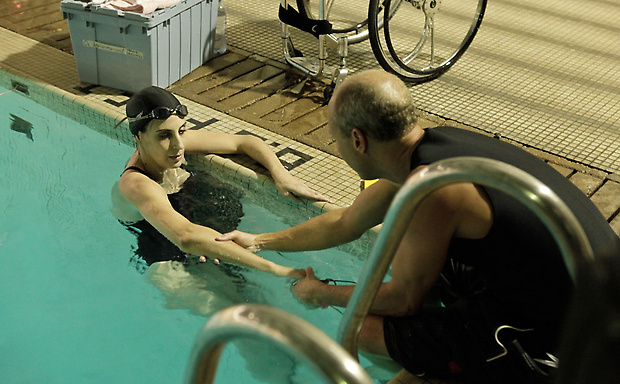H ave you ever wondered how people see you? Maybe better than you see yourself? Maybe worse? Have you ever been thankful for the days when good hair, bright lipstick, or new clothes could hide the battles you fight?
ave you ever wondered how people see you? Maybe better than you see yourself? Maybe worse? Have you ever been thankful for the days when good hair, bright lipstick, or new clothes could hide the battles you fight?
What if you knew what people saw – a wheelchair, or a tic, maybe small, maybe big. Perhaps they see spastic, continuous movement. How would you feel if you knew that it wasn’t your whole story, but probably the only one many would read. The one you would be judged for, measured by, identified with – for all your days.
A UK study done in 2014 on current attitudes towards people with disabilities noted the following:
“Over a third (36%) of people tend to think of people with disabilities as not as productive as everyone else. A quarter (24%) of people with disabilities have experienced attitudes or behaviors where other people expected less of them because of their disability.”
And a full two thirds of the British population are uncomfortable when interacting with people who have disabilities.
Person First.
One of my dearest friends has a son with severe physical disabilities stemming from newborn jaundice. I often use her as a sounding board when discussing these topics, and she mentioned person-first language.
Because that’s the problem. Instead of seeing the person, people see the disability. One short chapter in a very long narrative. And that limited sight goes deeper than just re-ordering our words. When we make people one dimensional, it’s easier to marginalize them. Easier to look away.
The good news is, what we see isn’t what the person with disabilities see. They are intricate, beautiful souls whose whole self is more than the sum of all their parts how ever they work. People with dreams, emotions, and agency, just like us. And we owe it to them to seek out the whole story. To see them the way they see themselves. Another study, this one on the importance of sport to teen athletes with disabilities, concluded with this:
“In summary, the present study clearly documents the importance of sport to adolescent athletes with disabilities. They have the desire to excel and pursue important goals. Overall, these results support the importance that sport holds for athletes with disabilities and provides information that should help increase awareness and acceptance of athletes with disabilities.”
The desire to excel is universal. The drive to succeed, whether it be in life or in sport, is not limited by our bodies.
At One with the Water, we see athletes. We see swimmers. We see champions.
The Foundation.

And by donating to our Foundation, you help us train them.
- $180 a month provides a child access to the life-changing swim team preparing them for high school and college.
- $275 a month teaches a child with special needs the lifesaving skill of swimming.
- $5000 provides 10 Adaptive Athletes with 3 months of coaching, tuition, pool space, and insurance!
- $10,000 provides 10 Adaptive Athletes with 6 months of coaching, tuition, pool space, and insurance!
Have you already experienced what swimming can do? Partner with us today to teach economically disadvantaged children, special needs children and Service-Disabled Veterans to become One with the Water! Be a hero today, and when you donate now, you can help reduce the risk of drowning for children by up to 88%! Be a hero and help us save the life of a child.
Donate Today Want more details? Visit our foundation page to be a hero.
Molly is a member of our creative team, mom of four water-loving babies, and a fierce advocate for CPR training and really early swim instruction.
